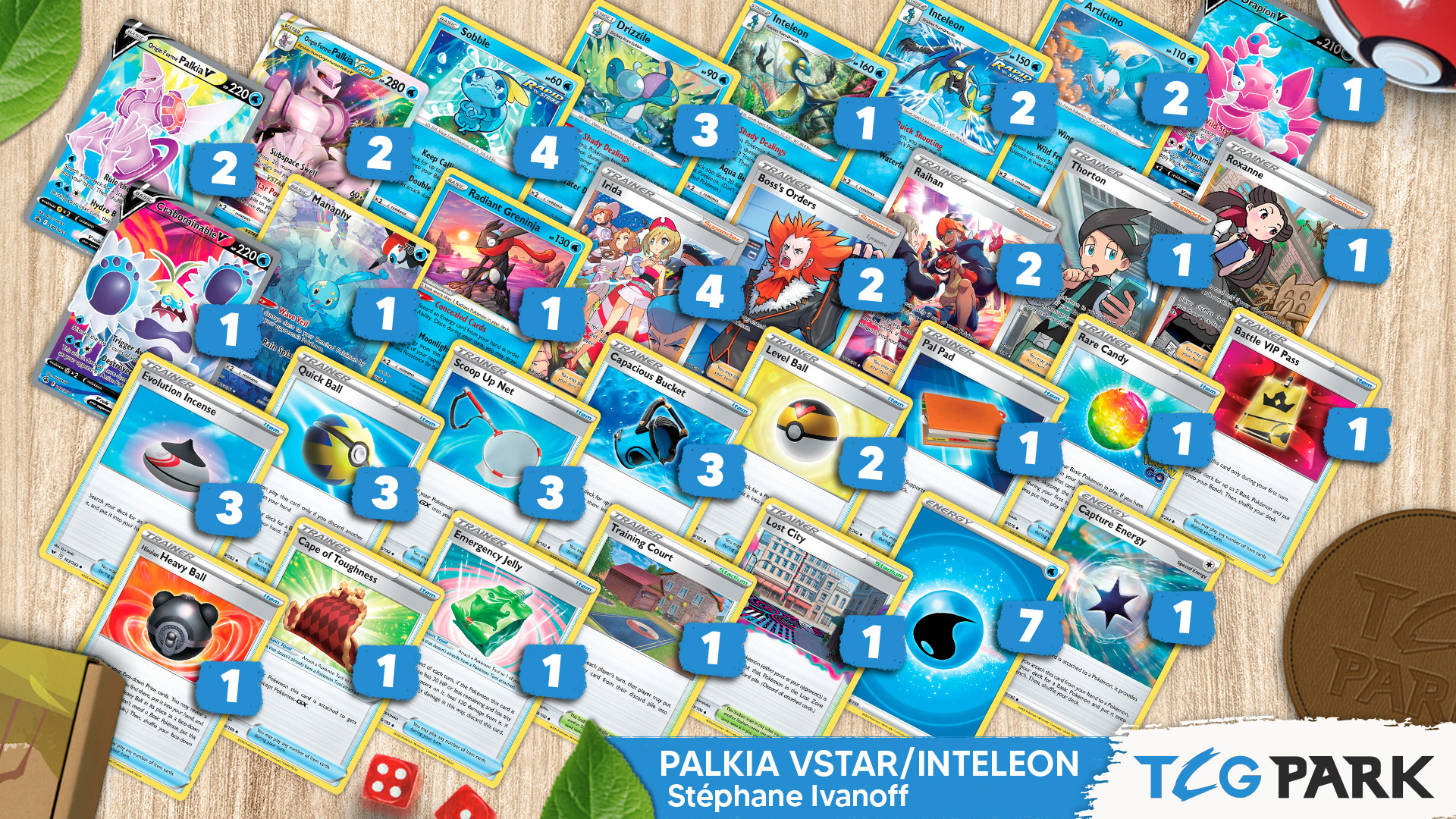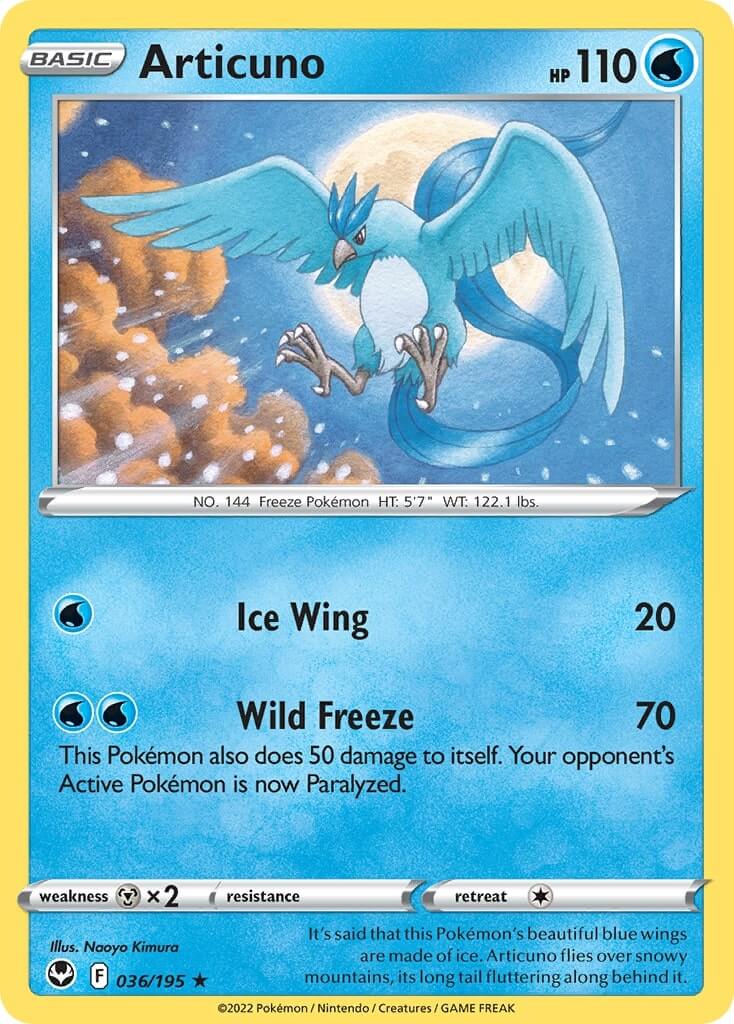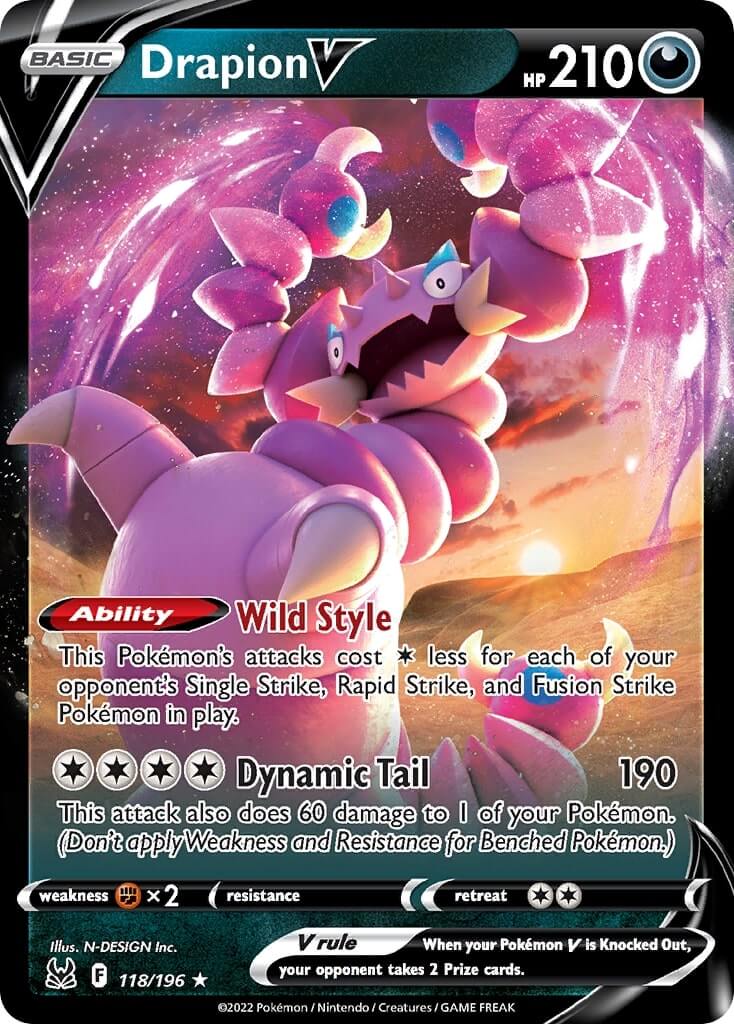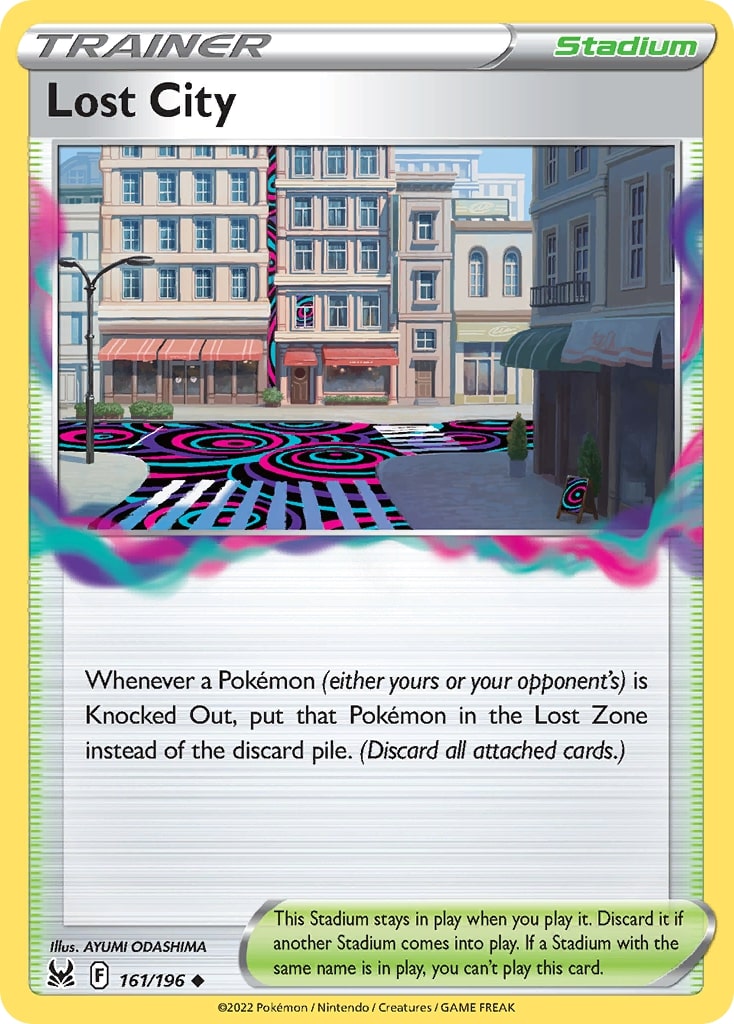Welcome back, readers! Before anything else, I wanted to thank all of you who read my guide to Goodra VSTAR. I received a lot of feedback and I’m glad that my first piece for TCG Park was so well received and that many players reported that it helped them get better with the deck. With that in mind, I hope my next contributions will be just as useful to you!
This week, I want to cover another very interesting and complex deck: Palkia VSTAR / Inteleon. I will show a sample decklist, explain the deckbuilding choices and some of the intricacies of the deck. As a disclaimer, this article will be a bit less in-depth than my Goodra VSTAR article, since I don’t have the same level of expertise with the deck (after all, I spent more than a week playing only Goodra in order to perfect the list; while I try to be familiar with all the decks in the metagame, I can’t dedicate that much time to all of them). My goal is to provide a clear picture of the deck to newer players so they can feel confident trying out the deck, while hopefully still providing more experienced players with some tips that can benefit them.
An overview
Upon its release in Astral Radiance, Palkia VSTAR quickly became the best deck in Standard, due to a combination of factors. Its Subspace Swell attack is ridiculously efficient for its cost, usually hitting around 220 damage and up to 260 if both players have a full Bench, and its Star Portal Ability gives it a powerful form of Energy acceleration. Thanks to it, and unlike in Arceus VSTAR decks for example, missing a turn 1 Energy attachment isn’t a big deal, which allows Palkia decks to play fewer Energy cards; Star Portal can also be used to power up other Water-type attackers, most notably Radiant Greninja, which can take multiple KOs in one turn. Thanks to the Inteleon engine and Irida, it was easy for Palkia VSTAR to get access to any card at any time; that includes situational Supporters such as Boss’s Orders or Roxanne, or key Item cards such as Echoing Horn. In short, there was nothing that the deck couldn’t do. Even though it didn’t end up winning NAIC or Worlds, that was only due to players focusing their entire deck on countering it with archetypes such as Arceus VSTAR / Flying Pikachu VMAX. Even then, Palkia still performed admirably.
After Lost Origin’s release in September, Palkia was still a powerful deck, but it wasn’t as dominant anymore due to competition from new archetypes, mostly Giratina VSTAR and Lost Zone Toolbox decks. What really changed it was the last main set of the Sword & Shield era. After Silver Tempest was released, Lugia VSTAR / Archeops became the clear BDIF (Best Deck In Format), and Palkia VSTAR matched poorly against it. For a while, it seemed Palkia / Inteleon’s time was definitely over… but then, it reinvented itself. On the first weekend of Regionals after Lugia asserted its dominance at LAIC, two players (Magnus Pedersen in Stuttgart and Jake Gearhart in Toronto) made the top 8 with new takes on Palkia. The deck had undergone a transformation, and it now had a unique plan to beat Lugia: a permanent Paralysis lock with Articuno.
In fact, this new version of the deck has specific game plans for many popular matchups. This means it’s not the easiest deck to pick up, as you need to understand what you should and shouldn’t do depending on what your opponent plays. Unlike other decks, your plan can change drastically from one matchup to another. That said, Palkia is a rewarding deck to play because cards like Irida and Drizzile give you a lot of control over the game, which means you have the opportunity to outplay an opponent with strategic choices.
Decklist
Here’s my current build of the deck:
Pokémon – 20
| 1 Drapion V LOR 118 |
| 2 Articuno SIT 036 |
| 1 Crabominable V FST 076 |
| 1 Manaphy BRS 041 |
| 2 Origin Forme Palkia V ASR 039 |
| 1 Radiant Greninja ASR 046 |
| 4 Sobble CRE 041 |
| 3 Drizzile SSH 056 |
| 1 Inteleon SSH 058 |
| 2 Inteleon CRE 043 |
| 2 Origin Forme Palkia VSTAR ASR 040 |
Trainer Cards – 32
| 1 Cape of Toughness DAA 160 |
| 1 Thorton LOR 167 |
| 3 Evolution Incense SSH 163 |
| 1 Training Court RCL 169 |
| 1 Pal Pad UPR 132 |
| 2 Boss’s Orders RCL 154 |
| 3 Quick Ball SSH 179 |
| 2 Raihan EVS 152 |
| 1 Roxanne ASR 150 |
| 1 Lost City LOR 161 |
| 2 Level Ball BST 129 |
| 3 Scoop Up Net RCL 165 |
| 4 Irida ASR 147 |
| 1 Rare Candy UL 082 |
| 1 Battle VIP Pass FST 225 |
| 1 Hisuian Heavy Ball ASR 146 |
| 1 Emergency Jelly SIT 155 |
| 3 Capacious Bucket RCL 156 |
Energy – 8
| 1 Capture Energy RCL 171 |
| 7 Water Energy SMEnergy 003 |

Gameplans
Statistically, the deck that you’re the most likely to face at any tournament is Lugia / Archeops. Against that archetype, the main attacker is Articuno. Most Lugia VSTAR lists don’t play any switching cards (Switch, Escape Rope, etc.), since they rely on Energy attachments from Archeops’ Primal Turbo if they need to retreat their Active Pokémon. This means they have no way to heal a Paralyzed Pokémon. Therefore, Articuno can deal 70 damage and Paralyze the opponent, preventing them from attacking.
If Articuno takes a KO, then the opponent can promote a new Active Pokémon, then KO Articuno, breaking the lock. However, that doesn’t have to happen! You can take KOs with Inteleon CRE’s Quick Shooting, forcing your opponent to promote a new Active Pokémon during your turn, which you can then keep paralyzing. Plan ahead which Pokémon you want to KO and be sure to place damage counters in advance in order to secure KOs. For example, say your opponent attacks with Lugia VSTAR on turn 2. You can then use Quick Shooting and Freezing Wind for three turns in a row, dealing 270 damage in total. On the next turn, you can KO Lugia VSTAR with Quick Shooting and take two Prize cards. It’s likely that your opponent will send out a Pokémon with few HP such as Dunsparce that you can’t not KO. Use Boss’s Orders to bring out another target, such as Archeops. You can attack Archeops for 70 damage, then 70 on the next turn (putting 20 damage on something else, maybe that Dunsparce?) and then Quick Shooting again for the KO, and so on. You can get by with one Inteleon, but having two in play will get you KOs faster, and give you more flexibility if you need to change targets at some point.
You may have noticed that Articuno damages itself with Wild Freeze, which means if you attack with it three times, it will be Knocked Out. That’s one more thing to manage, which you can do in several ways. First, Emergency Jelly is a very specific card that you can attach to Articuno after attacking with it for the second time. It will heal it and give you more turns. Second, you can attach Cape of Toughness to Articuno to buy an additional turn. You can also Scoop Up Net a damaged Articuno to promote the other one, and repeat this a couple turns later. Thanks to Training Court, you can get an Energy back every turn, which will let you charge up your attackers even if you’ve already used Star Portal. Also, even if an Articuno gets Knocked Out, it’s not the end of the world if you can keep the lock going!
Once you’ve got enough of a Prize lead, you can consider breaking the lock. Palkia VSTAR is a good attacker in the late game to take your last couple of Prizes.
Against Mew VMAX, the deck plays completely differently. Thanks to Drapion V, you’ll be able to take three Prizes easily at some point in the game. The question is how to take the other three.
Typically, a Mew VMAX player will set up two Mew V, three Genesect V, and an Oricorio. One possible strategy is to use Moonlight Shuriken on Oricorio (who will survive with 20 HP due to its Ability) and a Genesect V. Then, when your opponent attacks with Mew VMAX, set up Drapion V and take the KO. Your opponent will likely KO you back, but all you need to do is KO the damaged Genesect V with a Boss’s Orders, while using Quick Shooting to finish off the Oricorio. You could also KO Genesect V before Mew VMAX, so you only take two Prizes and can’t be hit by Roxanne, then take four Prizes in one turn (Quick Shooting Oricorio and Drapion V). Ideally, don’t play down a Palkia V before you use Drapion V, so your opponent can only take one Prize at a time. You can even use Thorton to bring a Palkia V in play and immediately evolve it into Palkia VSTAR on the turn you use Drapion V!
When playing against Arceus VSTAR / Duraludon VMAX and Hisuian Goodra VSTAR, which are two decks that rely on tankiness, your ace is Crabominable V. Thanks to Quick Shooting, this Pokémon can reach very high damage: after two Quick Shooting, Destroyer Punch deals 330 damage, which added to the 40 damage from Quick Shooting, will KO anything, even a Goodra VSTAR that just used Rolling Iron. Cape of Toughness is mainly in the deck for Crabominable V, as most Duraludon and Goodra decks will be unable to OHKO a Crabominable V with +50 HP, so it will be able to attack twice in a row. This innovation is due to Ian Robb, who made top 16 with Palkia at Orlando Regionals.
Finally, against Lost Zone decks, things get a bit more complicated. There’s no unique strategy here, and the best plan depends on which type of Lost Zone Toolbox you’re facing. Inteleon SSH is a fairly decent attacker and can usually trade well in the early game, which is why Rare Candy is included: it allows Inteleon to attack on the second turn. Another key card in this matchup is Lost City, which will often stay in play for some time, and can be used to get rid of important Pokémon, such as Radiant Greninja and Manaphy. If you send your opponent’s Manaphy to the Lost Zone, you can then take a double KO with Radiant Greninja. Note that thanks to Quick Shooting, Moonlight Shuriken can KO Pokémon with more than 90 HP (notably Cramorant).
In short, try to take Prizes as fast as possible and keep Roxanne to disrupt your opponent’s hand. Some Lost Zone decks play Lightning attackers, such as Raikou V with Sky Seal Stone, but this type of list didn’t perform that well at Orlando Regionals.
Some Palkia lists include Eiscue with Wash Energy to try to win against Lost Zone decks. Basically, if you only have Eiscue in play (which can be achieved with some combination of Scoop Up Net and Thorton), Eiscue can’t be damaged by decks that only play Basic Pokémon, and Wash Energy protects it against effects such as Sableye’s Lost Mine. (If you have Pokémon on the Bench, the opponent can KO Eiscue by using Escape Rope and Boss’s Orders to bring Eiscue in and out of the Active Spot, removing the effect of Blockface.) While this plan is good in theory, it has issues in practice. Getting a lone Eiscue on the board means being very careful with your Bench and not playing down as many Pokémon as you’d otherwise like, so you have to base your whole plan around Eiscue. However, even if you manage to do that, some decks tech for Eiscue. A good amount of Lost Zone Toolbox decks in Orlando played Echoing Horn, and some Regigigas players include Team Yell Horn and Regieleki ASR in their lists.
The other issue with Eiscue is that it only works if you play Wash Energy. With the consistency issues that Palkia can have, I would rather have Capture Energy over Wash Energy. Six Water Energy is also a low number in my experience, and I would rather play seven so my Capacious Buckets stay useful longer.
General tips
Finally, here are some things to keep in mind in general.
- Palkia / Inteleon is a hard deck to play, with a lot of available options on almost every turn. You’ll need to practice with it to make sure you’re used to the kind of dilemmas the deck can offer.
- Even when you’re in a good spot, try to think about which cards your opponent could have that could be an issue. For example, even if you set up a good Paralysis lock against Lugia, some Lugia lists play Bird Keeper. As much as possible, you should assume that your opponent plays it and make sure that you have the cards in hand needed to start the lock again after the opponent plays Bird Keeper.
- Unfortunately, Palkia has some consistency issues, mostly in the early game. You’ll get bad opening hands at a higher rate than most other decks. In a best of 3 environments, such as at Regionals, be ready to concede a game very quickly if your opening hand is unplayable, and to play fast in order to finish the other two games. Generally speaking, it’s useful to practice playing fast in a deck with so many decisions.
- That said, don’t scoop up too fast, either! Palkia has comeback options with cards such as Articuno and Roxanne. Being behind in the Prize race is acceptable and, to a certain extent, expected.
- Remember that despite being, nominally, the main Pokémon of the deck, Palkia VSTAR isn’t always a priority. You don’t always have to set up a Palkia V on the first turn, and in fact, you generally shouldn’t against two of the main matchups (Lugia and Mew). Radiant Greninja and multiple Sobble are usually the most important cards to set up on the first turn.
Finally, the last piece of advice I can give is to try to prepare for the metagame at any given event. Palkia is excellent when players don’t expect it much. However, if many players tech for it, with cards such as Bird Keeper or even Espeon VMAX in Lugia, it might not be the best deck to bring to a tournament. Metagaming is a part of the game, and it’s especially important with a deck that is built to counter specific archetypes.







